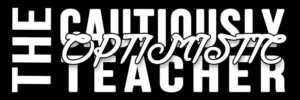Today’s class is all about collaboration and refinement. Students have spent the past several days building their essays—now it’s time to polish them through peer editing. By sharing their writing and giving constructive feedback, students will develop stronger revision skills and learn to see writing from a reader’s perspective. After a short grammar mini-lesson, students will use a structured peer editing checklist to guide their feedback and prepare their final drafts.
Imperative and Interrogative Verbs
Before diving into editing, let’s warm up with a quick grammar review of imperative and interrogative verbs. Understanding how to use commands and questions effectively helps improve tone and clarity in writing.
Students will identify examples, discuss how these verbs function in communication, and apply them to improve clarity in their essays.
Peer Editing
Now that essays are complete, it’s time for students to trade papers and provide thoughtful, constructive feedback using the peer editing handout. This step helps writers catch small errors, improve structure, and ensure that arguments are clear and well-supported.
Encourage students to focus on both content (organization, evidence, transitions) and mechanics (grammar, punctuation, MLA format). Remind them that editing is about helping each other grow as writers, not just marking mistakes.
When finished, students should begin revising their essays based on the feedback they receive. Set a due date for final drafts.
Homework / Next Steps
Finish revising essays for final submission.
Review notes on MLA formatting and in-text citations before submitting the final copy.
- Hand out the self-assessment worksheet, if desired.

